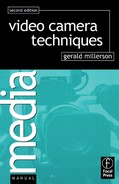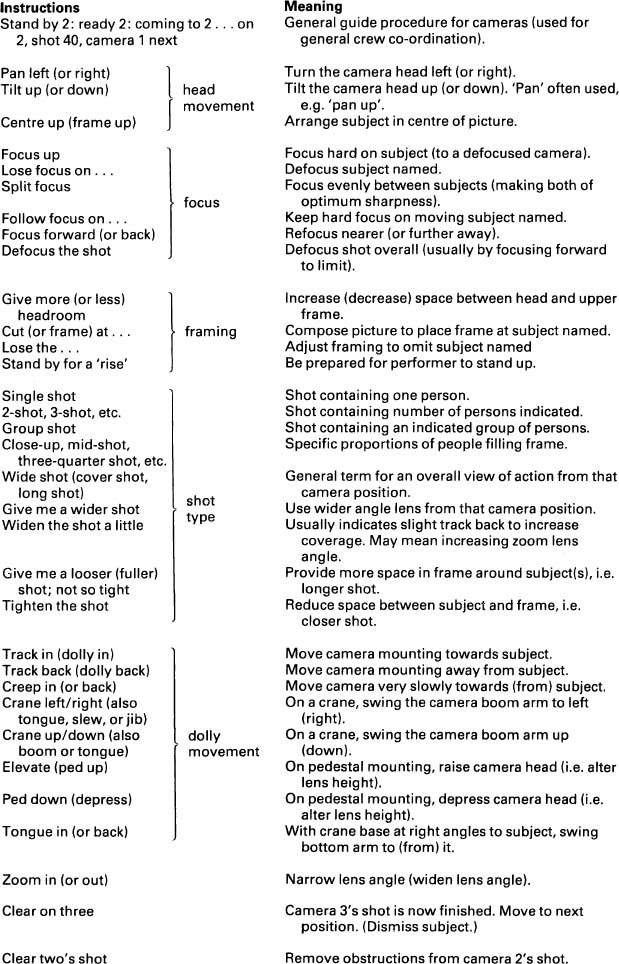All members of the camera and sound crew on the studio floor wear headsets. Through these they receive the general production intercom (talkback) and the program audio.
This may be a communal system, in which everyone on the intercom circuit is heard. In another arrangement, the studio team hear just the director and an assistant. Other production-team members (technical director, video engineers, etc.) use access-keys or separate private-wire circuits to talk to the crew. Cameras can reply over their headset microphones, or on a nearby studio microphone.
It is best to keep instructions or discussion brief on intercom. A lot of unnecessary chat can be tiring to listen to. People tend to ‘switch off’ mentally, and assume that the verbiage is for someone else! The director guides the team over intercom:
‘Camera 1, she will be moving in a moment, so start to pull out.
(The lecturer stands.) She’s going over to the table… you tighten as she gets there.
Camera 2, a BCU of the vase as she points to the decoration…’
By the time the taping session or transmission time arrives, intercom instructions have become brief action reminders, with the director’s assistant calling out each shot number and camera, readying other sources (e.g. film channel), giving timings, countdown cues, etc:
‘Coming to 1… On 1… Shot 15… Ready for the rise… Stand-by 2…
Coming to 2… On 2… Camera 1 moves to the window…’
From their camera card, each camera operator knows details of the camera’s positions, type of shots, moves, etc. During rehearsal, each has learned the performer/talent action, the camera operations involved (panning, focusing, dollying). Now all that is needed is a brief reminder. The intercom system coordinates action, and alerts the crew to any particular difficulties.
Always keep a step ahead, by checking on your next planned floor position and its shots. As soon as your present shot is completed and the switcher has gone over to the next camera, try to move there silently, yet quickly.
When dollies move around fast, or travel over long distances, the noise of cable drag can be heard quite clearly in a quiet studio. A cable-handler (grip, tracker) can help by ensuring that the camera always works with a sufficiently slack cable loop, collecting together surplus cable, avoiding snarl-ups, taut or trapped cable and similar hazards.

